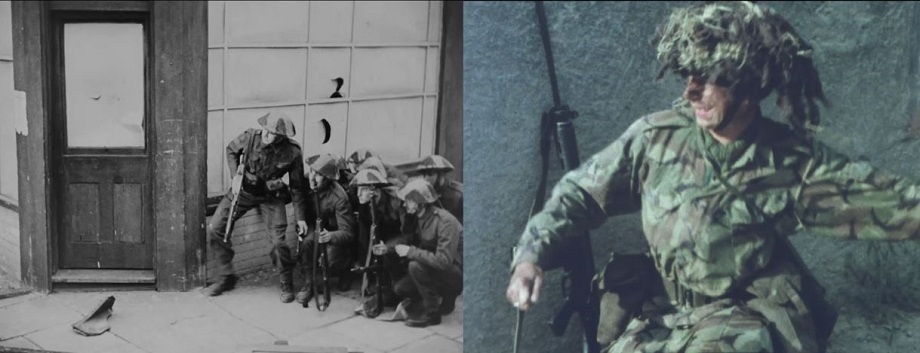British Army Training Films
Natalia Bianchi is a digitisation technician at IWM who handles and watches films as part of her everyday work. In this video Natalia compares two military training films from the 1940s and 70s. Retrieving the reels after they have been in storage and watching the still frames come to life as moving images in the scanner is described as an almost 'magical experience.'
The Army Kinematograph Service (AKS) was established by the British government in 1941 to meet the increasing training and recreational needs of the British Army during the Second World War. It expanded over the next few years to become one of the most prominent film production units for the British Armed Forces and notable films produced included House to House Fighting in 1943.
Fighting in Villages was produced by the Ministry of Defence in 1979. Both are army training films - clearing houses occupied by the enemy in one case and defending territory by the platoon defence in the other.
During the completion of House to House Fighting, some of the artillery depicted in the film became obsolete. This is what a title points out at the beginning of the film, as a demonstration of how this kind of film would have been frequently updated. And yet, 36 years later, Fighting in Villages appears to share some features and inevitably invites us to conduct a comparison in terms of mis-en-scene.
Film still from House to House Fighting (1943). © IWM DRA 433. Film still from Fighting in Villages (1979) © IWM DRA 1401
As military training films for a potential combat situation, these films stage, in varying levels of detail, the correct way to proceed with an educational objective. The scholastic voice-over (although with a great sense of humour in the earlier film) drives us through the procedure.
House to House Fighting was shot in a deserted British town as a military film set. Something about the state of the buildings and their emptiness reflects the artifice of those houses as a filming set. The way in which the voice-over invites the soldier-actors to follow his instructions and his interaction with the audience reinforce this idea. The use of music emphasizes the tone, for some moments eased and playful, despite the subject matter of the training. These characteristics allow the film to be appreciated by a wider audience that is not necessarily military trained and reflects the quality of these productions usually made by film technicians who already had a large experience in cinema before being recruited by the AKS.
On the other hand, Fighting in Villages was filmed in the BAOR (British Army of the Rhine, Germany). A technical language is used for the voice-over and the intentional choice of not including music (except for the notes in the beginning and the dramatic ending extract) reveals in contrast a more restrained style suitable for an audience of army professionals. However, in both cases, when the voice-over falls silent, the more cinematographic scenes emerge allowing us to become immersed with the action taking place.
Find out More
Fighting in Villages (1979) was digitised thanks to Digital Futures, IWM’s mass digitisation programme to digitise 1.8 million vulnerable films, photographs and sound recordings from the Cold War era over the next five years. For priority access to collection items outside the approved schedule, IWM offers a digitisation on demand service. Contact the licensing team for more information and to order HD clips.

